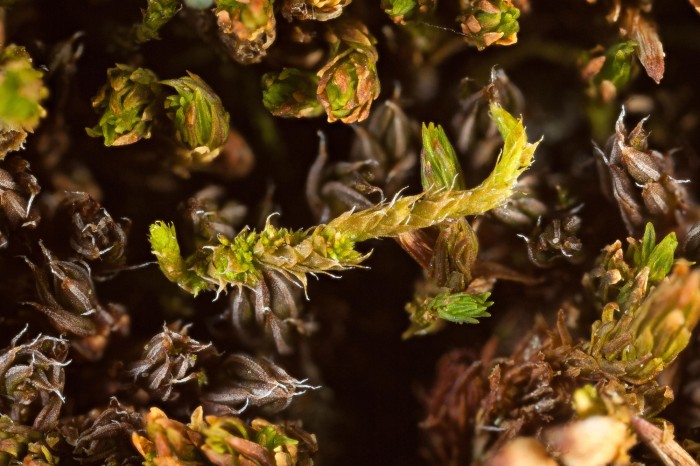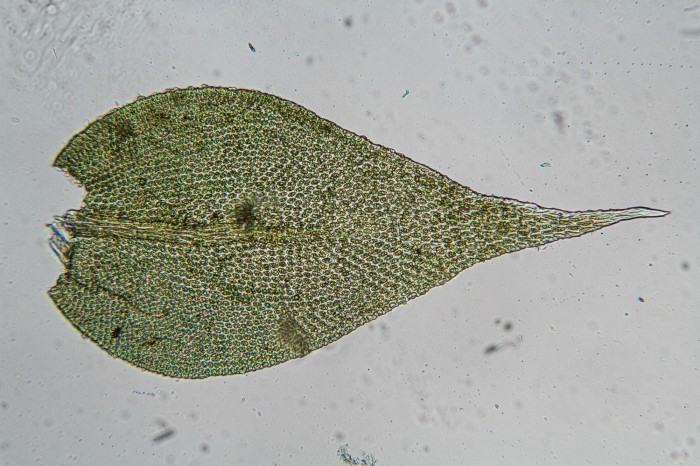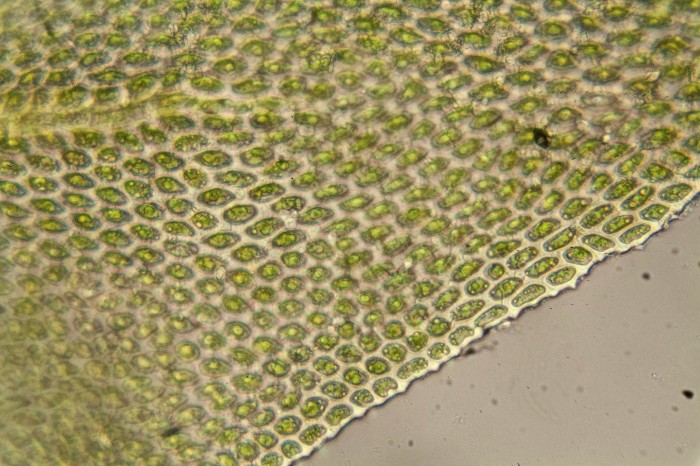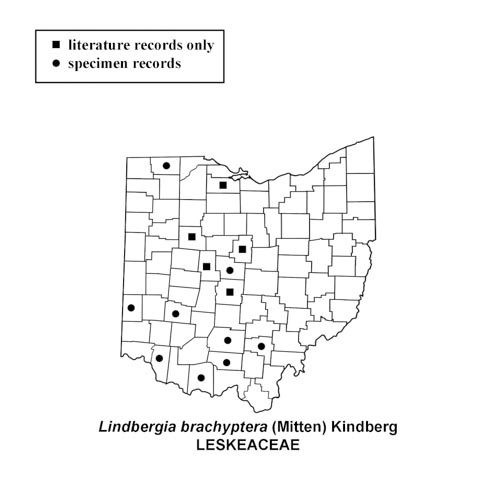Lindbergia brachyptera
“fine-branch moss”

A single strand of Lindbergia brachyptera in the center of the picture from Fayette County, Ohio. June 22, 2012. Notice the tiny green brood bodies in the leaf axils.

Lindbergia brachyptera leaf.

Lindbergia brachyptera leaf cells are stoutly unipapillose.
How to recognize Lindbergia brachytptera: Fine-branch moss is a small light-colored pleurocarp (carpet moss) that often produces clusters of brood bodies (asexual reproductive structures) in the axils of some leaves. Through the microscope, look for ovate acuminate leaves with a costa extending about 1/2 way to the tip, and short, strikingly thick-walled, cells that are unipapillose.
Where to see Lindbergia brachytptera: Fine-branch moss occurs on trunks and branches of trees, typically as sparse strands with other mosses, and thus is easily overlooked.

